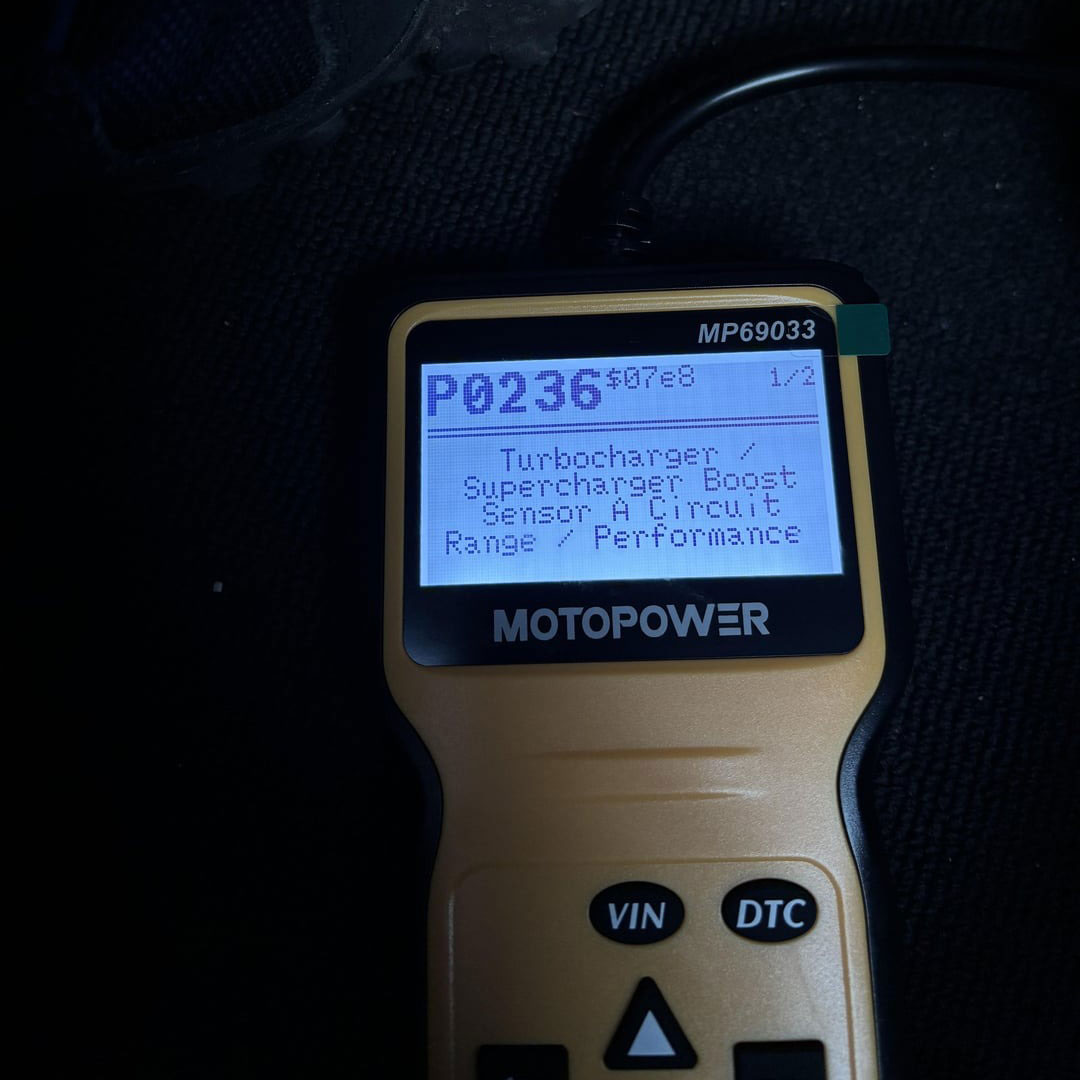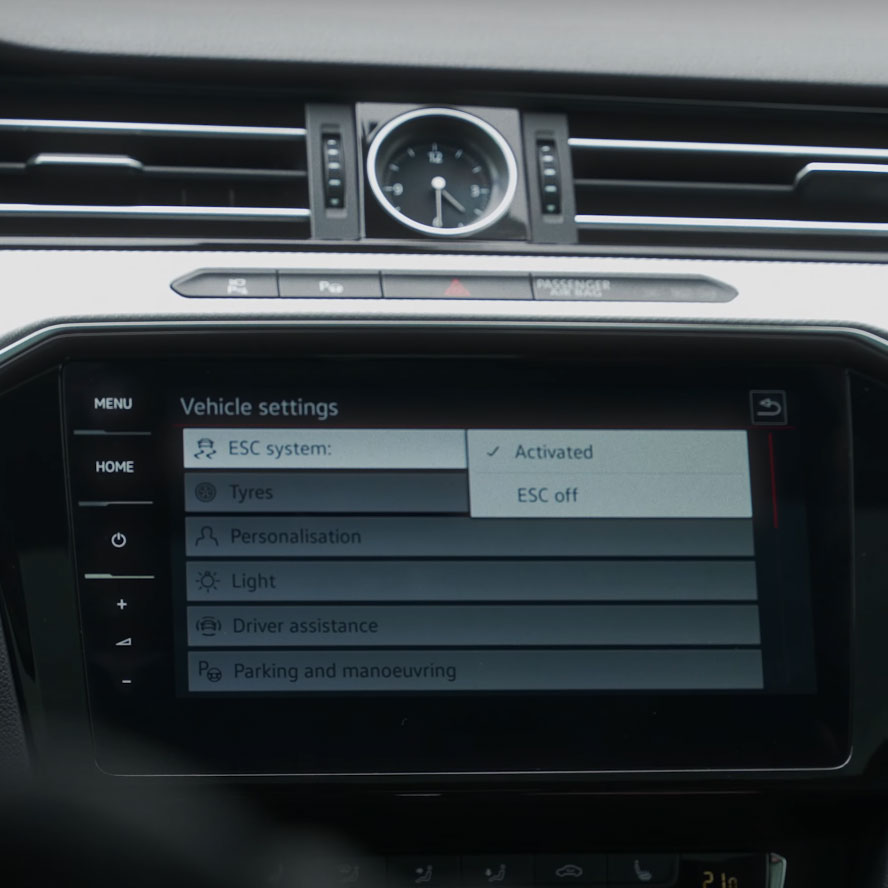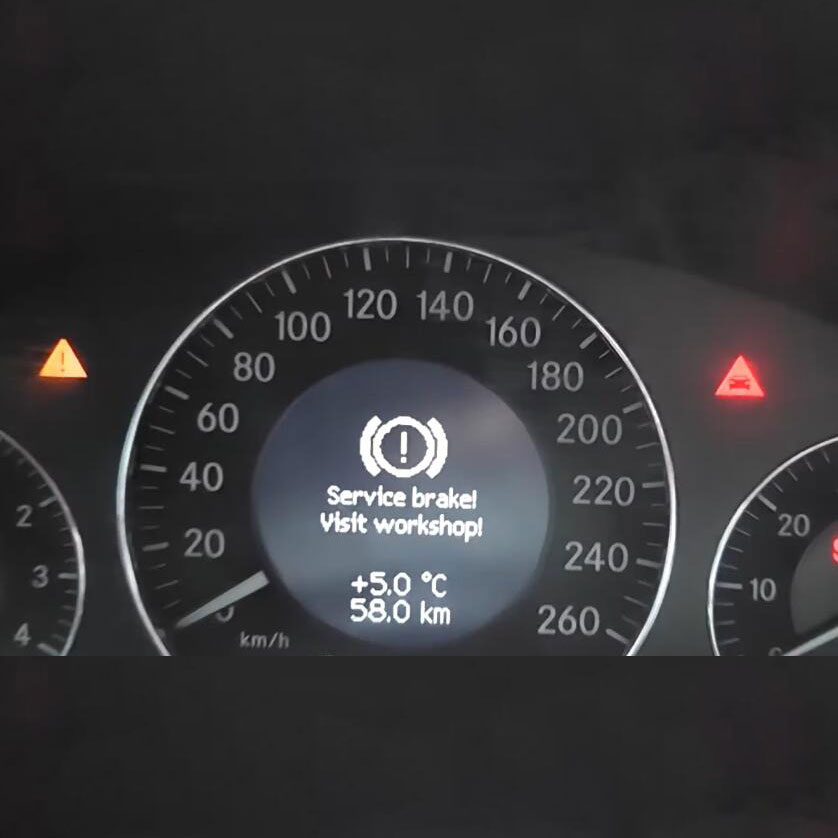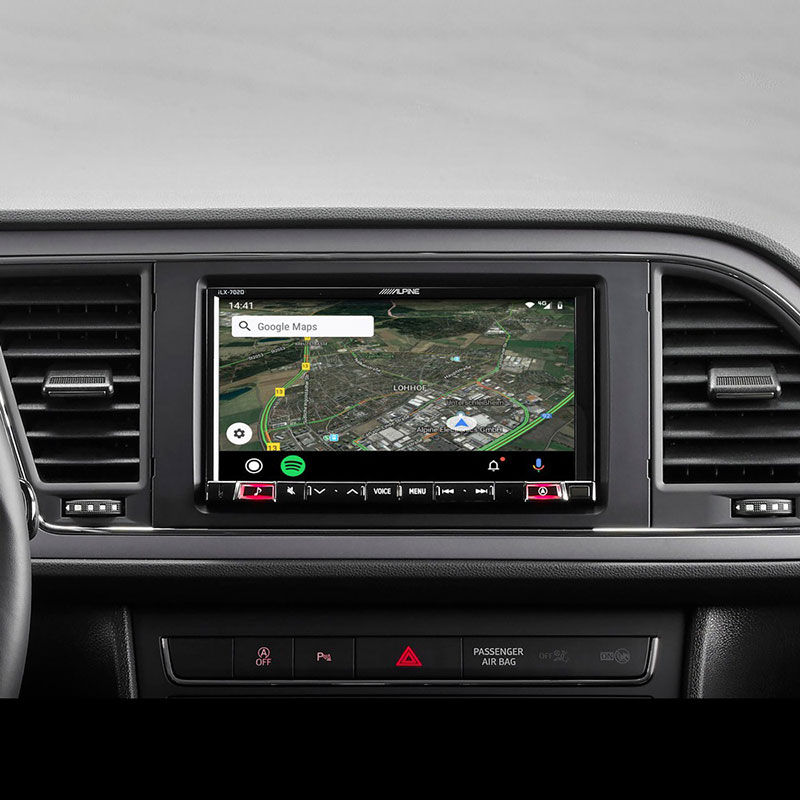
Audi DTC 01273:009 – Comprehensive Troubleshooting Guide
Contents
- 1. Understanding Audi DTC 01273:009
- 1.1 What Does Audi DTC 01273:009 Actually Mean?
- 1.2 Common Symptoms Associated with DTC 01273:009
- 1.3 Potential Causes of Audi DTC 01273:009
- 1.4 Understanding the Climatronic Control Module Role
- 2. Diagnostic Steps for Audi DTC 01273:009
- 2.1 Preliminary Checks: Visual Inspection and Fuse Check
- 2.2 Using VCDS for Diagnostics
- 2.3 Testing the Blower Motor
- 2.4 Checking the Blower Motor Resistor
- 2.5 Wiring Harness and Connector Checks
- 2.6 Testing the Climatronic Control Module
- 3. Advanced Troubleshooting Techniques
- 3.1 Using an Oscilloscope for Signal Analysis
- 3.2 Checking for CAN Bus Communication Issues
- 3.3 Addressing Intermittent Faults
- 4. Coding and Programming Solutions for Audi HVAC Systems
- 4.1 Why Coding and Programming Are Necessary
- 4.2 Common Coding Procedures for HVAC Systems
- 4.3 Using AutoExplain for Remote Coding and Programming
- 4.4 Step-by-Step Example of Coding a Replacement Climatronic Module
- 5. Preventing Future HVAC Issues
- 5.1 Regular Maintenance Tips
- 5.2 Importance of Quality Parts
- 5.3 Staying Updated with Software and Diagnostic Tools
- 6. Case Studies: Real-World Examples
- 6.1 Case Study 1: Faulty Blower Motor Resistor
- 6.2 Case Study 2: Corroded Wiring Harness
- 6.3 Case Study 3: Climatronic Control Module Failure
- 7. Cost Analysis: Repairing Audi DTC 01273:009
- 7.1 DIY vs. Professional Repair
- 7.2 Estimated Costs for Common Repairs
- 7.3 Factors Affecting Repair Costs
- 8. AutoExplain: Your Partner for Audi HVAC Solutions
- 8.1 Benefits of Choosing AutoExplain
- 8.2 Contact AutoExplain Today
- 9. FAQ: Common Questions About Audi HVAC Systems and DTC 01273:009
- 9.1 What is the most common cause of Audi DTC 01273:009?
- 9.2 Can I fix DTC 01273:009 myself?
- 9.3 How much does it cost to repair DTC 01273:009?
- 9.4 What tools do I need to diagnose DTC 01273:009?
- 9.5 How often should I replace my cabin air filter?
- 9.6 Can low refrigerant cause DTC 01273:009?
- 9.7 What is component protection, and why is it necessary to remove it when replacing a control module?
- 9.8 Can AutoExplain help me remove component protection from a replacement control module?
- 9.9 What is variant coding, and why is it necessary?
- 9.10 How can I contact AutoExplain for remote coding and programming services?
- 10. Conclusion
Audi Dtc 01273:009 indicates a fault with the fresh air blower (V2) circuit, specifically an open or short to ground. This comprehensive guide, brought to you by AutoExplain, will help you diagnose and resolve this issue, covering everything from basic checks to advanced troubleshooting and coding solutions. We aim to equip automotive technicians, garage owners, and even Audi enthusiasts with the knowledge and tools needed to tackle this problem efficiently, ultimately saving time and resources. You’ll gain insights into HVAC system diagnostics, climate control module functionalities, and coding applications.
1. Understanding Audi DTC 01273:009
1.1 What Does Audi DTC 01273:009 Actually Mean?
Audi Diagnostic Trouble Code (DTC) 01273:009 signifies a malfunction within the fresh air blower (V2) circuit in your Audi’s climate control system. The “009” suffix specifies that the fault is an “Open or Short to Ground.” This means the electrical circuit powering the blower motor has either a break in the wire (open circuit) or an unintended connection to ground (short to ground), preventing the blower motor from functioning correctly. According to the National Highway Traffic Safety Administration (NHTSA), HVAC system malfunctions can affect driver comfort and visibility, potentially leading to safety hazards. Resolving this DTC promptly ensures a comfortable and safe driving experience.
1.2 Common Symptoms Associated with DTC 01273:009
When the fresh air blower is malfunctioning, you will likely observe the following symptoms:
- No Airflow from Vents: The most obvious symptom is that no air is blowing from the vents, regardless of the climate control settings.
- Intermittent Blower Operation: The blower might work sporadically, cutting in and out without a clear pattern.
- Unusual Noises: You may hear strange noises, such as squealing or grinding, coming from the blower motor area.
- HVAC System Malfunctions: The entire climate control system may appear to be malfunctioning, with features like AC and heating not working as expected.
- Fault Code Present: The diagnostic scan using a tool like VCDS (VAG-COM Diagnostic System) will confirm the presence of DTC 01273:009.
1.3 Potential Causes of Audi DTC 01273:009
Several factors can trigger this DTC:
- Faulty Blower Motor: The blower motor itself could be defective due to wear and tear or electrical failure.
- Wiring Issues: Damaged, corroded, or loose wiring in the blower motor circuit can cause an open or short to ground.
- Blower Motor Resistor Failure: The blower motor resistor controls the speed of the blower. A faulty resistor can disrupt the circuit.
- Climate Control Module Malfunction: In some cases, the Climatronic control module itself could be the source of the problem.
- Fuse Problems: A blown fuse in the blower motor circuit can cut off power to the motor.
1.4 Understanding the Climatronic Control Module Role
The Climatronic control module, often referred to as the HVAC (Heating, Ventilation, and Air Conditioning) control unit, serves as the brain of your Audi’s climate control system. Its primary functions include:
- Temperature Regulation: Managing the heating and cooling functions to maintain the set temperature.
- Air Distribution: Controlling the direction of airflow to different vents in the car.
- Blower Speed Control: Regulating the speed of the fresh air blower to adjust airflow volume.
- Diagnostic Monitoring: Monitoring the various components of the HVAC system and reporting any faults through diagnostic trouble codes (DTCs).
2. Diagnostic Steps for Audi DTC 01273:009
2.1 Preliminary Checks: Visual Inspection and Fuse Check
Before diving into complex diagnostics, start with these basic checks:
- Visual Inspection: Carefully examine the wiring harness and connectors leading to the blower motor. Look for any signs of damage, corrosion, or loose connections. Repair or replace any damaged components.
- Fuse Check: Locate the fuse for the fresh air blower in your Audi’s fuse box (refer to your owner’s manual for the exact location). Use a multimeter to check if the fuse is blown. Replace it with a new fuse of the correct amperage if necessary.
According to the Automotive Service Association (ASA), these preliminary checks can often resolve simple electrical issues, saving significant diagnostic time.
2.2 Using VCDS for Diagnostics
VCDS (VAG-COM Diagnostic System) is an invaluable tool for diagnosing Audi vehicles. Here’s how to use it to diagnose DTC 01273:009:
- Connect VCDS: Plug the VCDS cable into the OBD-II port of your Audi and connect it to your laptop.
- Start VCDS Software: Launch the VCDS software on your laptop.
- Select Control Module: Choose “Select” and then navigate to the “08 – Auto HVAC” module.
- Read Fault Codes: Click on “Fault Codes – 02” to read any stored diagnostic trouble codes.
- Review Freeze Frame Data: If DTC 01273:009 is present, review the freeze frame data. This data provides a snapshot of the conditions when the fault occurred, such as temperature, speed, and voltage, helping to pinpoint the problem.
- Clear Fault Codes: After noting the fault codes and freeze frame data, clear the codes and retest the system to see if the code returns.
2.3 Testing the Blower Motor
To determine if the blower motor itself is faulty, perform these tests:
- Direct Power Test: Disconnect the blower motor from its wiring harness. Apply direct power (12V) and ground to the motor using jumper wires. If the motor does not run, it is likely faulty and needs replacement.
- Resistance Test: Use a multimeter to measure the resistance across the blower motor terminals. A reading of infinite resistance (open circuit) or very low resistance (short circuit) indicates a faulty motor. The expected resistance should be within a specified range, typically around 1-3 ohms.
2.4 Checking the Blower Motor Resistor
The blower motor resistor controls the speed of the blower. Here’s how to check it:
- Locate the Resistor: The blower motor resistor is usually located near the blower motor, often in the air duct.
- Visual Inspection: Inspect the resistor for any signs of damage, such as burnt or broken wires.
- Resistance Test: Use a multimeter to measure the resistance across the resistor terminals. You should see varying resistance values depending on the speed setting. If there is no resistance or infinite resistance, the resistor is likely faulty.
2.5 Wiring Harness and Connector Checks
Thoroughly inspect the wiring and connectors for any of the following issues:
- Continuity Test: Use a multimeter to perform a continuity test on each wire in the blower motor circuit. This ensures that there are no breaks in the wires.
- Short to Ground Test: Use a multimeter to check for a short to ground. With the circuit disconnected, measure the resistance between each wire and a known good ground point on the vehicle. A reading of close to 0 ohms indicates a short to ground.
- Voltage Drop Test: With the circuit connected and the blower motor running, use a multimeter to measure the voltage drop across each connection. Excessive voltage drop indicates a poor connection.
- Connector Inspection: Check the connectors for corrosion, bent pins, or loose connections. Clean or replace any damaged connectors.
2.6 Testing the Climatronic Control Module
If you’ve ruled out other potential causes, the Climatronic control module might be the issue. Here’s how to test it:
- Voltage Check: Use a multimeter to check if the control module is receiving the correct voltage and ground. Refer to the wiring diagram for the specific pins to test.
- Signal Output Test: Use VCDS to monitor the output signals from the control module to the blower motor. Verify that the module is sending the correct signals to control the blower speed.
- Module Replacement: As a last resort, you can try replacing the control module with a known good unit. However, this should be done with caution, as the module may need to be coded to the vehicle. AutoExplain can provide coding and programming services for replacement modules.
3. Advanced Troubleshooting Techniques
3.1 Using an Oscilloscope for Signal Analysis
An oscilloscope can be used to analyze the signals in the blower motor circuit in more detail. This can help identify intermittent faults or signal distortion that might not be visible with a multimeter.
- Connect the Oscilloscope: Connect the oscilloscope probes to the blower motor control wire and a good ground point.
- Monitor the Signal: Turn on the blower motor and monitor the signal on the oscilloscope screen. You should see a clean, consistent PWM (Pulse Width Modulation) signal that varies with the blower speed.
- Analyze the Waveform: Look for any abnormalities in the waveform, such as signal clipping, noise, or dropouts. These can indicate wiring issues, a faulty control module, or a problem with the blower motor itself.
According to a study by the Society of Automotive Engineers (SAE), the use of oscilloscopes can significantly improve the accuracy and efficiency of automotive diagnostics.
3.2 Checking for CAN Bus Communication Issues
The Climatronic control module communicates with other modules in the vehicle via the CAN (Controller Area Network) bus. Communication issues can sometimes cause HVAC problems.
- Check for CAN Bus Fault Codes: Use VCDS to scan for fault codes in other modules, such as the Gateway module (address 19). Look for any codes related to CAN bus communication errors.
- Monitor CAN Bus Signals: Use VCDS to monitor the CAN bus signals related to the HVAC system. Verify that the control module is sending and receiving the correct messages.
- Check Wiring and Connectors: Inspect the CAN bus wiring and connectors for any signs of damage or corrosion.
3.3 Addressing Intermittent Faults
Intermittent faults can be particularly challenging to diagnose. Here are some tips:
- Thorough Visual Inspection: Pay close attention to the wiring and connectors, looking for any signs of chafing or loose connections.
- Monitor with VCDS: Use VCDS to monitor the blower motor circuit while driving or operating the vehicle under different conditions. This can help you catch the fault when it occurs.
- Use Freeze Frame Data: Review the freeze frame data associated with the DTC to understand the conditions when the fault occurred.
- Component Isolation: Systematically isolate different components in the circuit to narrow down the source of the fault.
4. Coding and Programming Solutions for Audi HVAC Systems
4.1 Why Coding and Programming Are Necessary
In modern Audi vehicles, coding and programming are often necessary when replacing or reconfiguring components in the HVAC system. This ensures that the new component is properly integrated into the vehicle’s electronic network and functions correctly.
- Component Adaptation: Coding allows the vehicle’s control modules to recognize and adapt to the new component.
- Feature Enablement: Programming can enable or disable certain features in the HVAC system, such as automatic climate control or auxiliary heating.
- Software Updates: Updating the software in the Climatronic control module can fix bugs, improve performance, and add new features.
4.2 Common Coding Procedures for HVAC Systems
Here are some common coding procedures for Audi HVAC systems:
- Component Protection Removal: When replacing a control module, you may need to remove component protection, which is a security feature that prevents the module from being used in another vehicle without authorization. AutoExplain can assist with component protection removal.
- Variant Coding: Variant coding allows you to customize the behavior of the HVAC system to match the vehicle’s specific configuration and options. This can include settings for the type of AC system, the number of zones, and other features.
- Adaptation Channels: Adaptation channels allow you to fine-tune certain parameters in the HVAC system, such as the temperature sensor calibration or the blower motor speed settings.
4.3 Using AutoExplain for Remote Coding and Programming
AutoExplain offers remote coding and programming services for Audi HVAC systems. Our experienced technicians can remotely access your vehicle’s control modules and perform the necessary coding and programming to resolve issues and enable new features.
Benefits of Using AutoExplain:
- Expert Technicians: Our technicians have extensive experience with Audi HVAC systems and coding procedures.
- Remote Access: We can perform coding and programming remotely, saving you time and hassle.
- Latest Software: We use the latest diagnostic and coding software to ensure compatibility and optimal performance.
- Custom Solutions: We can provide custom coding solutions tailored to your specific needs and requirements.
How AutoExplain Works:
- Contact Us: Reach out to AutoExplain via WhatsApp at +1(936)2896695 or email at [email protected] to discuss your needs and schedule a remote coding session.
- Prepare Your Vehicle: Ensure your vehicle is connected to a stable power source and has a reliable internet connection.
- Connect Diagnostic Tool: Connect your diagnostic tool (such as VCDS) to your vehicle and your laptop.
- Remote Session: Our technician will remotely access your laptop and perform the necessary coding and programming.
4.4 Step-by-Step Example of Coding a Replacement Climatronic Module
Here’s a step-by-step example of how AutoExplain can remotely code a replacement Climatronic module:
- Install the New Module: Physically install the new Climatronic control module in your Audi.
- Connect VCDS: Connect your VCDS cable to the OBD-II port and launch the VCDS software.
- Contact AutoExplain: Contact our technicians to initiate the remote coding session.
- Component Protection Removal: Our technician will use specialized tools and software to remove component protection from the new module.
- Variant Coding: The technician will then perform variant coding to match the module to your vehicle’s specific options and configuration. This may involve entering specific coding values based on your vehicle’s VIN (Vehicle Identification Number) and equipment list.
- Adaptation Channels: If necessary, the technician will adjust adaptation channels to fine-tune the module’s performance, such as calibrating temperature sensors or adjusting blower motor speeds.
- Final Testing: After coding is complete, the technician will perform final testing to ensure that the HVAC system is functioning correctly. This may involve checking for fault codes, monitoring sensor values, and verifying that all features are working as expected.
5. Preventing Future HVAC Issues
5.1 Regular Maintenance Tips
To prevent future HVAC issues, follow these maintenance tips:
- Regular Filter Changes: Replace the cabin air filter every 12,000 to 15,000 miles (or as recommended by your vehicle’s manufacturer). A clogged filter can restrict airflow and strain the blower motor.
- System Cleaning: Periodically clean the HVAC system to remove mold, bacteria, and debris. This can help prevent unpleasant odors and improve air quality.
- Refrigerant Checks: Have the refrigerant level checked regularly by a qualified technician. Low refrigerant can reduce cooling performance and damage the compressor.
- Component Inspection: Inspect the HVAC components, such as the blower motor, resistor, and wiring, for any signs of damage or wear.
5.2 Importance of Quality Parts
When repairing your Audi’s HVAC system, it’s important to use high-quality parts from reputable manufacturers. Using cheap or inferior parts can lead to premature failure and further problems.
- OEM Parts: Original Equipment Manufacturer (OEM) parts are designed and manufactured to the same specifications as the original parts in your vehicle. They offer the best fit, performance, and reliability.
- Aftermarket Parts: Aftermarket parts can be a more affordable option, but it’s important to choose parts from reputable brands that have a proven track record of quality.
- Warranty: Look for parts that come with a warranty. This provides peace of mind and protects you against defects.
5.3 Staying Updated with Software and Diagnostic Tools
The automotive industry is constantly evolving, with new technologies and software updates being released regularly. To effectively diagnose and repair modern vehicles, it’s important to stay updated with the latest software and diagnostic tools.
- VCDS Updates: Regularly update your VCDS software to ensure that you have the latest features, bug fixes, and vehicle coverage.
- Training Courses: Attend training courses and workshops to learn about new diagnostic techniques and repair procedures.
- Online Resources: Utilize online resources, such as forums, technical articles, and videos, to stay informed about the latest developments in the automotive industry.
6. Case Studies: Real-World Examples
6.1 Case Study 1: Faulty Blower Motor Resistor
Vehicle: 2015 Audi A4
Symptom: Blower motor only works on high speed
Diagnosis: VCDS scan revealed DTC 01273:009. Further testing showed that the blower motor resistor was faulty.
Solution: Replaced the blower motor resistor with a new OEM part. Cleared the DTC and verified that the blower motor now works on all speeds.
6.2 Case Study 2: Corroded Wiring Harness
Vehicle: 2012 Audi Q5
Symptom: Intermittent blower motor operation
Diagnosis: Visual inspection revealed a corroded wiring harness near the blower motor.
Solution: Repaired the damaged wiring harness by cleaning the corrosion and replacing the affected wires and connectors. Applied dielectric grease to prevent future corrosion.
6.3 Case Study 3: Climatronic Control Module Failure
Vehicle: 2017 Audi A6
Symptom: No airflow from vents, no response from climate control system
Diagnosis: All other components tested good. Suspected faulty Climatronic control module.
Solution: Replaced the Climatronic control module with a new unit and used AutoExplain’s remote coding service to remove component protection and perform variant coding. Verified that the HVAC system now functions correctly.
7. Cost Analysis: Repairing Audi DTC 01273:009
7.1 DIY vs. Professional Repair
Deciding whether to repair Audi DTC 01273:009 yourself or take it to a professional depends on your skill level, available tools, and the complexity of the problem.
DIY Repair:
- Pros: Cost savings, learning experience
- Cons: Time-consuming, requires specialized tools and knowledge, risk of misdiagnosis
Professional Repair:
- Pros: Expertise, access to advanced diagnostic tools, warranty on parts and labor
- Cons: Higher cost
According to a survey by AAA, the average cost of automotive repairs at a professional repair shop is $500 to $600.
7.2 Estimated Costs for Common Repairs
Here are estimated costs for common repairs related to Audi DTC 01273:009:
| Repair | Estimated Cost (USD) |
|---|---|
| Fuse Replacement | $5 – $10 |
| Blower Motor Replacement | $200 – $400 |
| Blower Motor Resistor Replacement | $100 – $200 |
| Wiring Repair | $100 – $300 |
| Climatronic Module Replacement | $500 – $1000 |
| Coding and Programming | $100 – $300 |
7.3 Factors Affecting Repair Costs
Several factors can affect the repair costs:
- Vehicle Model and Year: Older or more complex vehicles may have higher repair costs.
- Part Quality: OEM parts typically cost more than aftermarket parts.
- Labor Rates: Labor rates vary depending on the location and the repair shop.
- Diagnostic Time: Complex issues that require extensive diagnostic time will result in higher labor costs.
8. AutoExplain: Your Partner for Audi HVAC Solutions
AutoExplain is your trusted partner for all your Audi HVAC needs. We offer a wide range of services, including:
- Remote Coding and Programming: Our experienced technicians can remotely code and program your Audi’s control modules to resolve issues and enable new features.
- Diagnostic Support: We provide diagnostic support to help you identify and troubleshoot HVAC problems.
- Technical Assistance: Our technical experts are available to answer your questions and provide guidance on repair procedures.
- Parts Sourcing: We can help you source high-quality OEM and aftermarket parts for your Audi HVAC system.
8.1 Benefits of Choosing AutoExplain
- Expertise: Our technicians have extensive experience with Audi vehicles and HVAC systems.
- Remote Convenience: We can perform coding and programming remotely, saving you time and hassle.
- Affordable Pricing: We offer competitive pricing on our services.
- Customer Satisfaction: We are committed to providing excellent customer service and ensuring your satisfaction.
8.2 Contact AutoExplain Today
Don’t let HVAC problems keep you uncomfortable. Contact AutoExplain today for expert assistance.
- Address: 1500 N Grant ST Sten Denver, Colorado, United States
- WhatsApp: +1(936)2896695
- Email: [email protected]
- Website: autoexplain.com
9. FAQ: Common Questions About Audi HVAC Systems and DTC 01273:009
9.1 What is the most common cause of Audi DTC 01273:009?
The most common cause is a faulty blower motor or blower motor resistor.
9.2 Can I fix DTC 01273:009 myself?
If you have basic mechanical skills and diagnostic tools, you can attempt to fix it yourself. However, complex issues may require professional assistance.
9.3 How much does it cost to repair DTC 01273:009?
The cost varies depending on the cause and whether you DIY or go to a professional. It can range from $5 for a fuse replacement to $1000 for a Climatronic module replacement.
9.4 What tools do I need to diagnose DTC 01273:009?
You will need a multimeter, VCDS (VAG-COM Diagnostic System), and basic hand tools. An oscilloscope can be helpful for advanced diagnostics.
9.5 How often should I replace my cabin air filter?
Replace the cabin air filter every 12,000 to 15,000 miles or as recommended by your vehicle’s manufacturer.
9.6 Can low refrigerant cause DTC 01273:009?
No, low refrigerant typically does not cause DTC 01273:009. However, it can affect the cooling performance of the HVAC system.
9.7 What is component protection, and why is it necessary to remove it when replacing a control module?
Component protection is a security feature that prevents a control module from being used in another vehicle without authorization. It must be removed to ensure the module functions correctly in your vehicle.
9.8 Can AutoExplain help me remove component protection from a replacement control module?
Yes, AutoExplain offers remote coding and programming services to remove component protection from replacement control modules.
9.9 What is variant coding, and why is it necessary?
Variant coding allows you to customize the behavior of the HVAC system to match your vehicle’s specific configuration and options.
9.10 How can I contact AutoExplain for remote coding and programming services?
You can contact AutoExplain via WhatsApp at +1(936)2896695 or email at [email protected]. You can also visit our website at autoexplain.com for more information.
10. Conclusion
Diagnosing and resolving Audi DTC 01273:009 requires a systematic approach, starting with basic checks and progressing to advanced troubleshooting techniques. By following the steps outlined in this guide and utilizing the expertise of AutoExplain, you can effectively address this issue and restore your Audi’s HVAC system to optimal performance. Remember, regular maintenance and the use of high-quality parts are essential for preventing future problems and ensuring a comfortable and safe driving experience. Whether you’re a seasoned technician, a garage owner, or a passionate Audi enthusiast, AutoExplain is here to support you with expert solutions and unparalleled customer service. Don’t hesitate to reach out and discover how we can help you keep your Audi running smoothly and comfortably.


How to Deactivate ESC in Volkswagen, Audi, Skoda, or SEAT

Mercedes Benz ‘Service Brake Visit Workshop’ Warning? Here’s What Dealers Don’t Tell You!

How to Perform Seat Navigation Update? – A Comprehensive Guide for Technicians






